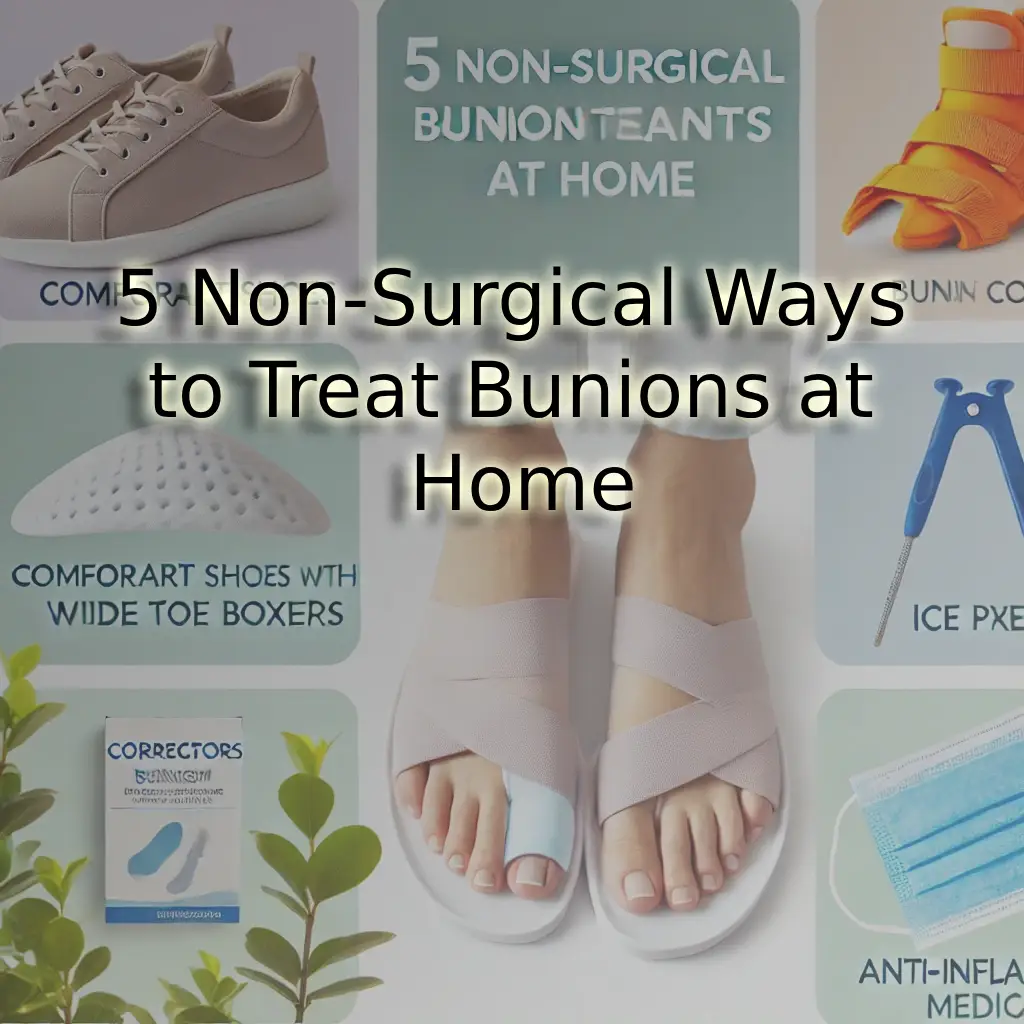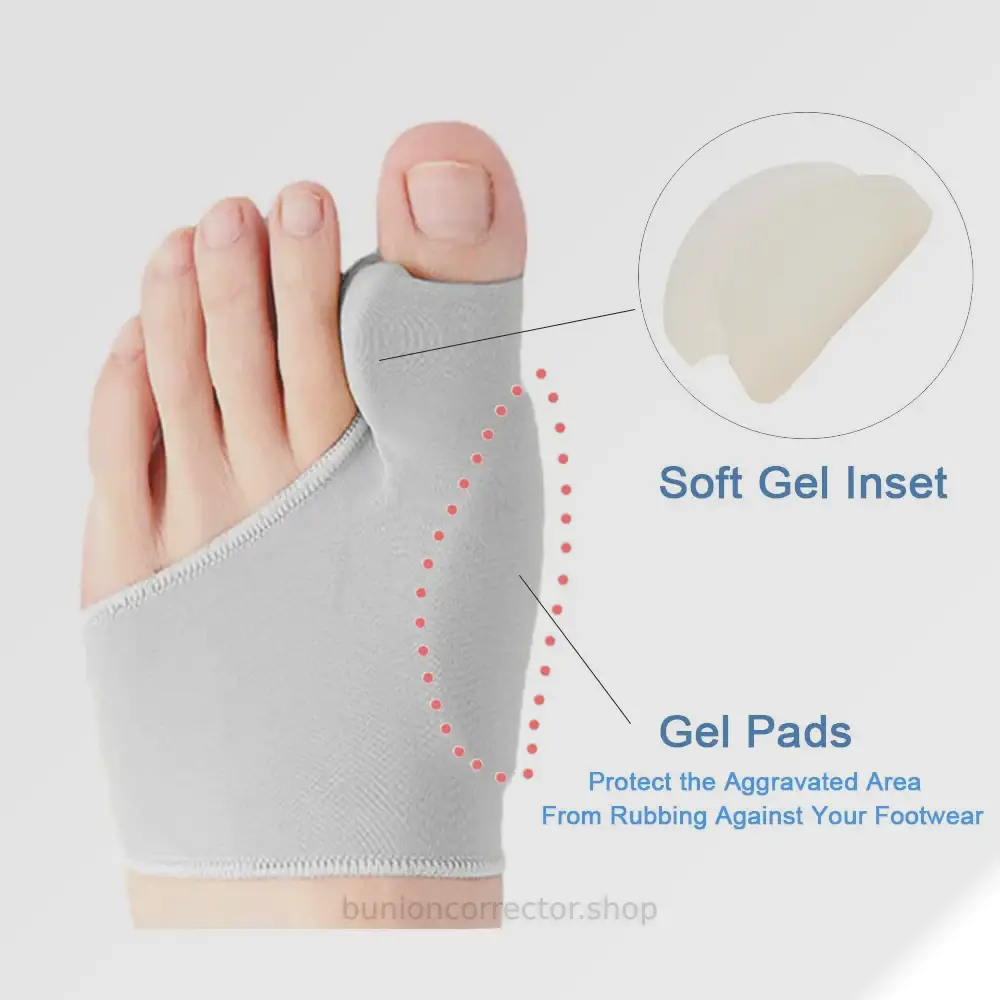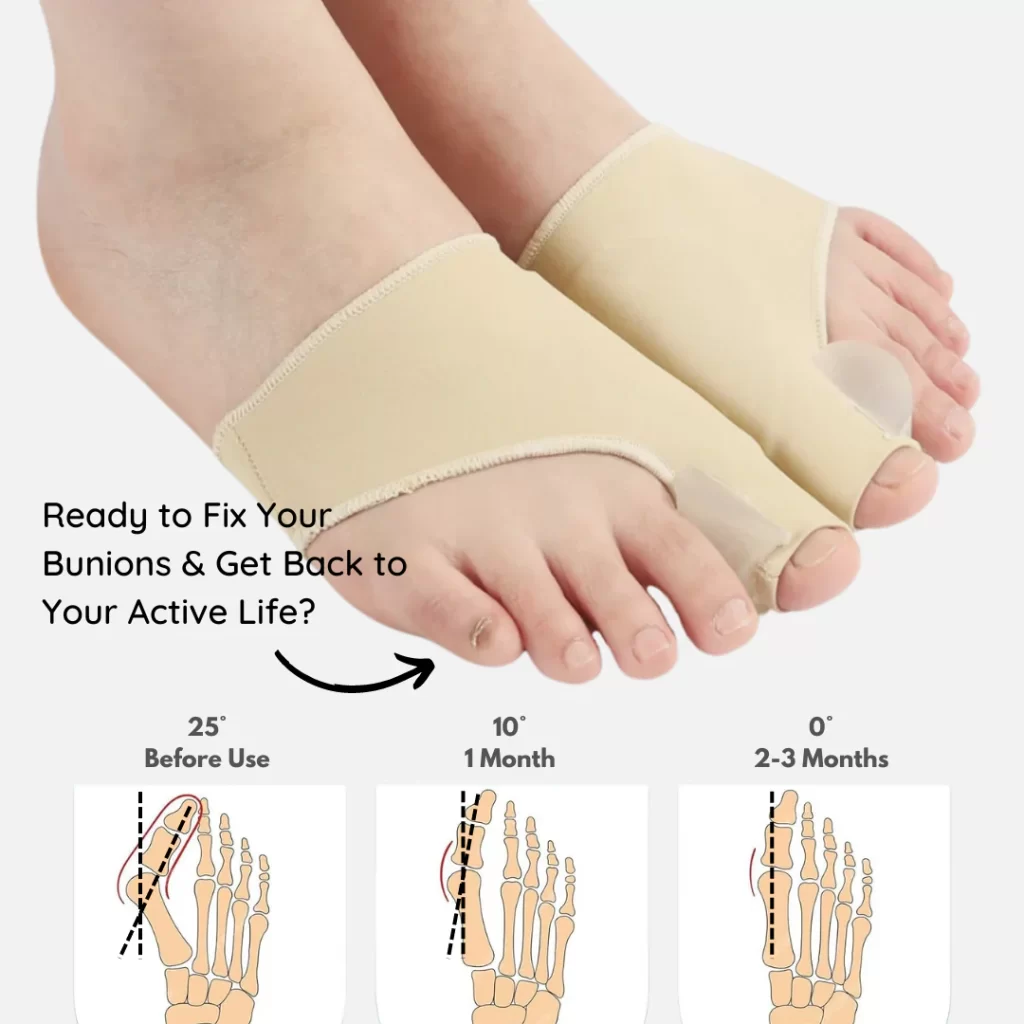Bunions can be a real pain, both literally and figuratively. They can make it uncomfortable to walk, exercise, or even wear your favorite shoes. If you’re dealing with bunions and looking for non-surgical solutions to manage your discomfort, you’re in the right place. In this blog post, we’ll explore five effective home remedies and strategies that can help you treat bunions without the need for surgery.

What Are Bunions?
A bunion, or “hallux valgus,” is a bony bump that forms on the joint at the base of your big toe. This condition develops when the bones in the front part of your foot shift out of place, causing the tip of your big toe to pull toward the smaller toes. This movement can lead to the characteristic bump on the side of your foot, which is often accompanied by pain, redness, and swelling.
Why Do Bunions Develop?
Bunions can occur for a variety of reasons, including genetics, improper footwear, arthritis, and foot injuries. While some people may be more predisposed to developing bunions due to their foot structure, wearing tight, narrow shoes can exacerbate the condition. Over time, this leads to discomfort and can even limit your mobility.
If you’re experiencing the discomfort of bunions but aren’t ready to consider surgery, there are several non-invasive methods that may help alleviate your symptoms and slow the progression of the bunion. Let’s take a closer look at five ways you can treat bunions from the comfort of your home.
1. Wear Comfortable, Supportive Shoes
How Your Footwear Affects Bunions
One of the easiest and most effective ways to reduce bunion pain is by changing the type of shoes you wear. Shoes that are too tight, narrow, or have high heels can place excessive pressure on the bunion, making it worse over time.
Opt for Wider Shoes
Switching to shoes with a wider toe box allows more room for your toes to spread out naturally. This can help relieve the pressure on the bunion and reduce the pain. Look for shoes with soft, flexible materials that won’t rub against the bunion and cause irritation.
Shoes with Arch Support
Good arch support is also important for preventing your foot from sliding forward, which can aggravate the bunion. Orthotic inserts can help provide the necessary support and cushion, making walking more comfortable and reducing stress on the bunion.
2. Use Bunion Correctors and Pads
What Are Bunion Correctors?
Bunion correctors are non-invasive tools that help align your toes and reduce the strain on the bunion. These devices are designed to be worn at night or during periods of rest, gently pulling your big toe back into its natural position. They can be highly effective in slowing the progression of the bunion and providing temporary relief from pain.
How to Use Bunion Pads
Bunion pads, on the other hand, provide a soft barrier between your bunion and your shoe, preventing friction and reducing discomfort. These pads are often made from gel or silicone and are easy to apply. Simply place the pad over the bunion before putting on your shoes to protect the area from irritation.
Why Bunion Splints Can Help
In addition to correctors and pads, bunion splints are another option for treating bunions at home. Splints are typically worn at night and help to immobilize the big toe, reducing pain and preventing further misalignment.

3. Perform Toe and Foot Exercises
Strengthening Your Foot Muscles
Foot exercises are a great way to improve flexibility, strengthen the muscles around the bunion, and relieve discomfort. Regular exercise can also help slow the progression of the bunion by keeping the joint flexible and strengthening the muscles in your feet.
Simple Bunion-Relief Exercises
- Toe Stretches: Sit with your feet flat on the floor. Lift your big toe up and hold for 5-10 seconds, then lower it. Repeat 10 times for each foot.
- Towel Scrunches: Place a towel on the floor, and use your toes to scrunch it up toward you. This exercise helps strengthen the muscles in your feet and can provide relief from bunion pain.
- Ball Rolls: Place a tennis ball or foam ball under the arch of your foot. Roll it back and forth for a few minutes to massage the muscles and improve flexibility.
Incorporating these exercises into your daily routine can help manage bunion symptoms over time.
4. Apply Ice to Reduce Swelling
Why Ice Therapy Works
If your bunion is swollen or inflamed, applying ice can help reduce swelling and numb the pain. Ice therapy works by constricting blood vessels, which reduces blood flow to the area and minimizes inflammation.
How to Ice Your Bunion
- Wrap a cloth or towel around an ice pack (or use a bag of frozen vegetables if you don’t have an ice pack).
- Place the ice pack on your bunion for 10-15 minutes at a time.
- Repeat this process several times throughout the day, especially after wearing shoes or standing for long periods.
Icing your bunion can provide immediate relief from pain and discomfort, making it easier to go about your day.
5. Consider Anti-Inflammatory Medication
Managing Bunion Pain with Medication
For more severe bunion pain, over-the-counter anti-inflammatory medications like ibuprofen or aspirin can be helpful. These medications work by reducing inflammation and providing pain relief, making it easier to manage your symptoms on a day-to-day basis.
Speak to Your Doctor
While anti-inflammatory medications can provide relief, it’s important to speak with your doctor before taking any new medication, especially if you have underlying health conditions or are on other medications. Your doctor can help you determine the best course of action and may suggest other treatments, such as cortisone injections, if necessary.
Final Thoughts: Take Care of Your Feet
Bunions can be frustrating, but they don’t always require surgery. By making small adjustments to your daily routine, like wearing more comfortable shoes, using bunion correctors, and incorporating foot exercises, you can manage your bunion pain and improve your quality of life.

Remember, every foot is different, and what works for one person may not work for another. It’s always a good idea to consult with a healthcare professional if your bunion pain persists or worsens. However, the methods outlined above are a great place to start if you’re looking for non-surgical ways to treat bunions at home.
Taking care of your feet is crucial to maintaining mobility and comfort, so don’t hesitate to try these home remedies today!
By following these non-surgical treatments, you can take control of your bunion pain and live a more comfortable, active life. If you’re looking for high-quality bunion correctors to aid your recovery, visit our shop at bunioncorrector.shop for the best selection of bunion care products!